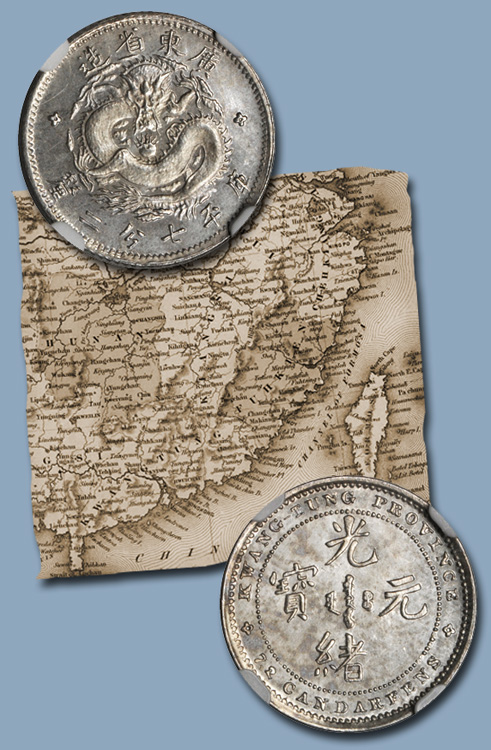
This second series would become known as the “Reversed Pattern” series. This is due to the inclusion of both English and Chinese legends on the obverse. The Chinese authorities disapproved of this placement and kept this series from entering circulation, resulting in this group of coins being much rarer than the first “Seven Three” series. This series also bears the distinction of possibly being the first Specimen or Proof set minted in China (the Seven Three series was minted in England). Another distinction is that this series would set the precedent for the Imperial Dragon coinage. The standard pattern for later Imperial Dragon coinage would have the inscriptions reversed, with only Chinese characters on the obverse and the English on the reverse surrounding the Dragon.
The obverse contains four large Chinese characters, which depict “Kuang Hsu Yuan Pao” which means Valuable Coin (from the) Kuang Hsu (regime). In the exact center are found four Manchu characters which denote the same information. The upper legend states “Kwang-Tung Province” and the lower legend provides the weight, 7.2 Candareens, which also provides its value of 10 Cents when converted to the Tael system. These upper and lower legends are separated by small rosettes.
The reverse of the coin features the distinctive Imperial flying Dragon in center, surrounded by Chinese characters. This upper legend reads: Made in Kwangtung Province. The lower portion states: Treasury scales, 7.2 Candareens (denomination/weight). This important piece is very elusive and missing from most major collections. The “Reversed Pattern” series was struck in a much smaller quantity than the “Seven Three” series and was never released for circulation, making it highly collectible. This coin represents the Chinese emerging into modern minting and is therefore an important piece of Chinese numismatic history.
Look for this and other Asian numismatic rarities from the Edgar Mandel Collection in our upcoming April Hong Kong Sale. Preview this impressive coin along with the rest of our auction this March at the Stack’s Bowers and Ponterio office located in Irvine, California. For details please refer to the Auction Schedule/Details link under Current Auctions at www.StacksBowers.com. To schedule an appointment, please call 800.566.2580.





